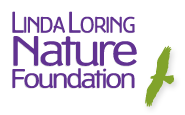by George Jabren, LLNF Volunteer
Over the past few weeks I’ve been working with conservation programs across the island to remove invasive plants from fields and roadsides. Every Thursday morning at 8:30, we’d meet at a selected location, spade in hand, to pull or dig out the plant of the week. Specifically, these last two weeks focused on eliminating Centaurea stoebe, commonly the spotted knapweed:
Photo: Rob Routledge, Sault College, Bugwood.org.
The island’s years-long effort to reduce spotted knapweed certainly cleared up the weed’s presence near Cisco. The roadsides had been nearly licked clean of spotted knapweed, both a success and a fright, for the fear of having missed patches of the plant or having misidentified it was slightly concerning.
Nonetheless, meandering across the roadsides with other members of the LLNF, Nantucket Land Bank, the Nantucket Land Council, and Nantucket Conservation Foundation made for interesting conversations, scattering small seeds of ecological knowledge as prolific as those of the knapweed itself. From debating the efficacy of the bee’s caste system to more focused dialogues on the dangers of the invasive species, such topics would lead me to say that I’ve heard it all. In that short time, though, I’m sure the other conservation members haven’t brushed the topsoil of their nature knowledge.
With regards to the invasive species, the spotted knapweed is an aggressive seed producer native to Europe and Asia. The species, however, made its way to North America tagging alongside transported hay and the undercarriages of vehicles. It prefers to grow in open areas with plenty of sunlight, and its highly competitive nature permits it to grow even in the densest of plant monocultures.
Two particular aspects at play give this plant a large edge over native species. First, the knapweed contains a large amount of phytotoxins which become noxious to other plants. As the toxins can cause skin irritation with direct contact is recommended that anyone treating populations of the weed wear gloves and wash hands after direct contact. Moreover, in large quantities, these phytotoxins can make neighboring species and soil appear sick and barren. Second, the knapweed forms a symbiotic relationship with a soil fungus, siphoning carbon from native grass species. While these two features alone give the species a strong competitive advantage over native plants, the knapweed’s identity as an invasive species additionally burdens the ecology by introducing nonnative fungi and bacteria. With such a problematic presence, it’s no wonder that the island has sought to eliminate it. The species, however, is far from gone on the island and there exist many patches along roadsides and open areas.
If you encounter a patch of the species and wish to lend the island a hand, the US Department of Agriculture recommends hand pulling/digging to remove the plants from the soil. The earlier one removes the weed, the better as once the knapweed blooms and seeds, it will have begun littering its surroundings with seeds. Additionally, it is important to remove the entirety of the plant’s crown (where the stem meets the roots) because the knapweed can regrow from broken root fragments. With such removal conditions, hand removal of the plant is recommended 2 to 4 times a year for multiple years to ensure the plant’s disappearance. Likewise, the nature foundations across the island have been doing such since 2018.
To learn more about invasive plants on Nantucket or join the effort to remove them, visit the Invasive Plant Species Committee page of the Nantucket Biodiversity Initiative’s website here.


